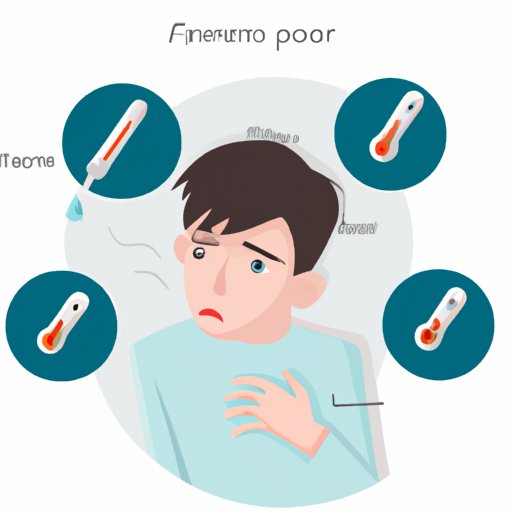
Introduction
Fever is a common symptom experienced by many people, especially during flu season. Knowing how to identify if you have a fever is important, as a fever can be a sign that your body is fighting off an infection. In this article, we will discuss how to check for a fever and the signs and symptoms associated with it.
Check Your Body Temperature Using a Thermometer
The most effective way to check if you have a fever is by taking your body temperature using a thermometer. Mercury thermometers are commonly used, but digital thermometers are becoming increasingly popular. To take your temperature accurately:
– Rinse the thermometer in cool water and dry it off.
– Place the thermometer under your tongue or in your armpit for the recommended amount of time.
– Read the thermometer and note your temperature.
The normal body temperature range is between 97°F and 99°F. If your temperature is above 99°F, it may indicate a fever. A fever is typically defined as a temperature of 100.4°F or higher.
Look for Symptoms
Aside from elevated body temperature, there are several symptoms that may indicate that you have a fever. These include:
– Chills or shivers
– Dehydration
– Headache
– Body aches
– Sweating
It is important to note that these symptoms may vary depending on the individual and the cause of the fever. For example, a fever caused by an infection may present differently from a fever caused by an autoimmune disorder.
Touch Your Skin
When you have a fever, your skin may feel hot to the touch. Additionally, you may experience flushed or red skin. These physical signs are often good indicators that you have a fever.
Keep an Eye on Your Breathing Rate and Heart Rate
A fever can cause an increased breathing and heart rate in the body. By monitoring these rates, you may be able to identify the presence of a fever. If you notice an increase in breathing and heart rates, it may be beneficial to check your body temperature as well.
Monitor Changes in Appetite
A fever can affect your appetite, causing a loss of interest in food or difficulty in keeping food down. If you notice changes in your appetite, such as not being hungry or being unable to eat, it could be a sign that you have a fever.
Observe Changes in Behavior
Changes in behavior can also be a sign that you have a fever. For example, you may experience restlessness, confusion, or irritability when you have a fever. These changes occur as a result of the body trying to fight off the infection.
Seek Medical Attention
It is important to seek medical attention if you are experiencing any of the above symptoms or have a high fever (above 102°F). Seeking medical attention can help ensure that the underlying cause of the fever is properly treated. Additionally, if a fever is left untreated, it can lead to more serious health issues.
Conclusion
In conclusion, it is important to know how to identify if you have a fever and the accompanying symptoms and signs. By monitoring your body temperature, symptoms, physical signs, breathing and heart rates, appetite, and behavior, you can determine if you have a fever and seek medical attention if necessary. Remember to take care of yourself when you have a fever, rest, and stay hydrated to help your body fight off infection.





